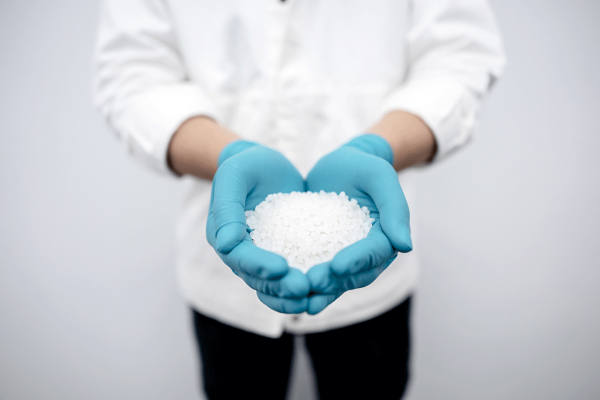
In recent years, calcium carbonate has been more and more widely used in the plastic filling industry because of its excellent characteristics and low price. The color of calcium carbonate itself is whiter than other inorganic mineral powder materials, with better stability and better plasticization. However, in order to produce high-grade plastics, there are certain requirements for calcium carbonate for filling.
Advantages of processing high-grade plastics with calcium carbonate
Good chemical stability
Calcium carbonate cannot react harmfully with resins and various additives, that is to say, calcium carbonate used in plastics and organic treatment agents on its surface cannot participate in various chemical reactions. Calcium carbonate has good chemical stability after high-temperature calcination, and basically does not react chemically with various components in the plastic system, but the organic modifier on its surface may participate in chemical reactions.
Good temperature resistance
Since the molding and processing of plastic products are carried out in a high temperature environment (generally greater than 180°C), it is required that calcium carbonate should not decompose and change color under the temperature conditions of heating and molding. The thermal decomposition temperature of calcium carbonate is above 800°C, while the plastic processing temperature will not exceed 350°C, so calcium carbonate itself will not thermally decompose.
However, traditional organic modifiers (such as stearic acid, titanate, and silane coupling agents) are not resistant to high temperatures, and are prone to yellowing and decomposition in high-temperature environments, resulting in increased VOC. The problem of “yellowing” has been encountered in the application. Therefore, traditional organic modifiers are not suitable for the organic modification of calcium carbonate in high-grade plastic products.
Excellent processability
Processability mainly includes the following indicators: good dispersibility, good hydrophobicity, and low oil absorption.
1. Good dispersion
For filled plastics, uniform dispersion of calcium carbonate particles in the plastic matrix is a necessary prerequisite, that is, calcium carbonate in the form of individual particles is dispersed in the vast ocean of matrix plastic like islands to achieve the effect of reinforcement. The smaller the particle size of the filler used, the better the mechanical properties of the filled plastic material at the same filling ratio. The dispersibility of calcium carbonate is mainly affected by factors such as intermolecular force, polar adsorption, and particle fineness.
2. Low oil absorption
The lower the oil absorption, the less resin or plasticizer is required to wet an equivalent amount of calcium carbonate. For most plastic products, such as soft polyvinyl chloride, artificial leather, cable materials, etc., it is necessary to use a plasticizer to help the mixture of the resin system to be plasticized. The higher the oil absorption value of calcium carbonate, the easier it is to absorb the plasticizer into the filler. , making it lose the effect of plasticizing resin. To make the resin system mixture reach a certain softness, it is necessary to increase the amount of plasticizer, resulting in an increase in cost. By modifying the surface of calcium carbonate and organically coating the surface of calcium carbonate particles, its oil absorption value can be greatly reduced.
3. Good hydrophobicity
Calcium carbonate is a substance that is very easy to absorb moisture. Once it absorbs moisture during storage or processing, the following problems will occur:
(1) Calcium carbonate agglomeration and poor fluidity of dry powder are easy to block the sieve holes, making it difficult to add;
(2) When plastic products are molded at high temperature, due to the precipitation of water vapor, defects such as “bulges” or “holes” appear in the products, which seriously affect the appearance and physical strength of plastic products.
4. Small mobility
Due to the large temperature changes in the molding process of plastic products, room temperature (raw material)-high temperature (processing)-room temperature (cooling molding). Calcium carbonate must be guaranteed not to migrate, otherwise it will cause uneven color or loss of luster on the surface of plastic products. The migration of calcium carbonate is mainly due to its poor wetting compatibility with the resin. When the temperature decreases and the plastic product shrinks, the moving speed of the resin and calcium carbonate is inconsistent.
